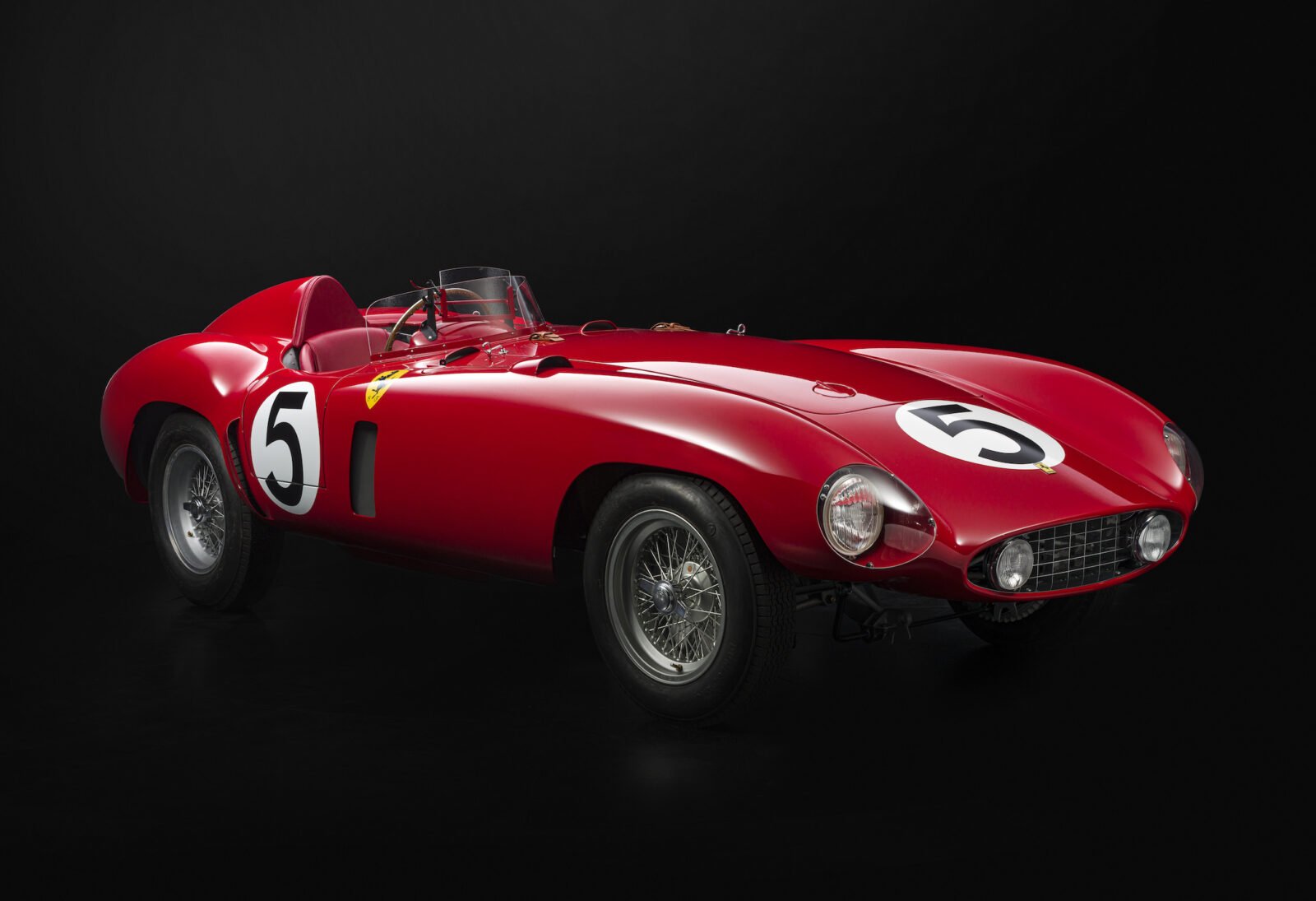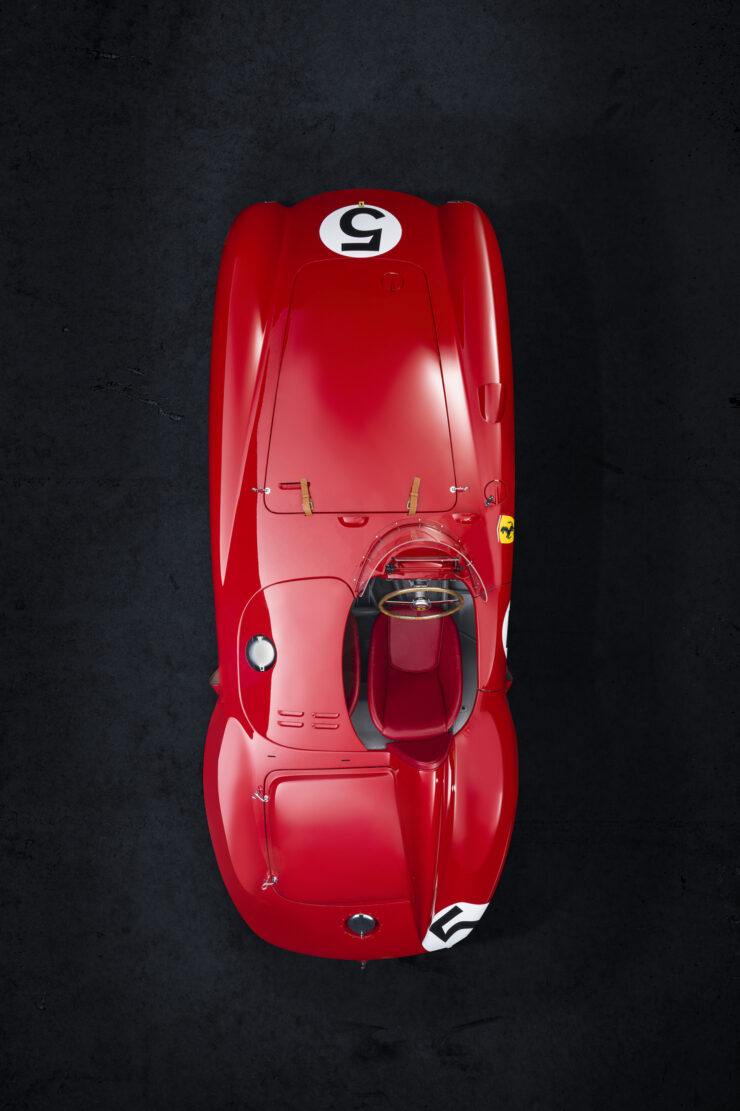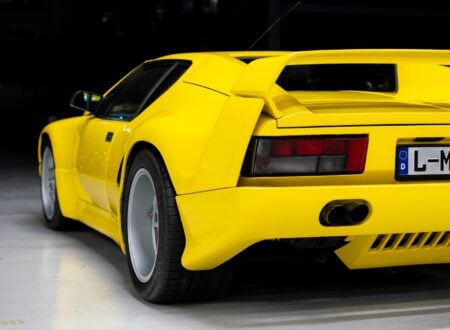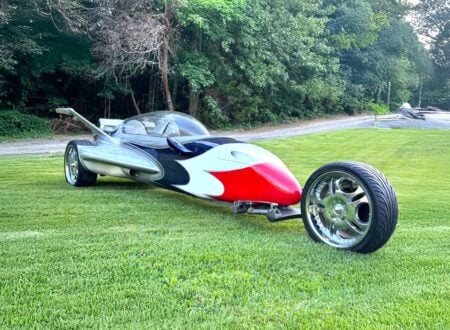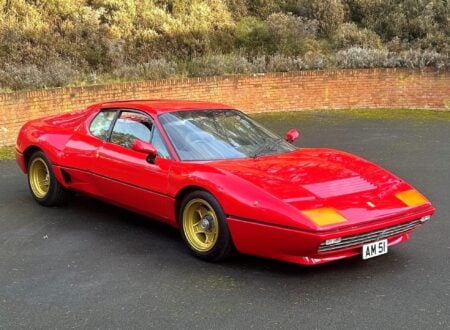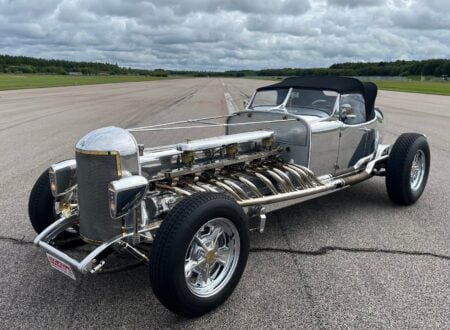The Ferrari 121 LM, also known as the Ferrari 735 LM, was developed with a single goal in mind – defeating the all-conquering Mercedes-Benz at the 24 Hours of Le Mans in 1955.
Unlike so many of the most memorable Ferraris from this period, the 121 LM was powered not by a V12 but by an Aurelio Lampredi-designed straight-six, the Tipo 121. It was a racing engine with a dry sump, double overhead cams, and an individual cylinder displacement of 735cc.
Fast Facts – The Ferrari 121 LM
- The Ferrari 121 LM was the Italian answer to the Mercedes-Benz 300SL (and SLR) and the Jaguar D-Type, its two greatest rivals and cars that it would battle with on circuits and road races across Europe.
- Both the 300SL and the D-Type were powered by straight-six engines with double overhead cams, crossflow heads, and race proven reliability. Enzo Ferrari tasked engineer Aurelio Lampredi to design a Ferrari straight-six to take the fight to the Germans and the Brits.
- Lampredi had earlier developed both a large V12 for Ferrari, and a smaller inline-four. He would use the Inline-four design, specifically from the Ferrari 500 Mondial, as his starting point for the new six. Essentially extending the block and adding two cylinders, which turned the 2.0 liter inline-four into a 3.0 liter straight-six – the Tipo 114.
- The Tipo 114 would be followed by the Tipo 118 with a larger 3.7 liter displacement, which was then succeeded by the Tipo 121 with a displacement of 4.4 liters and 330 bhp. It would be this final engine that powered the Ferrari 121 LM.
The Italians vs The Germans vs The Brits
In the mid-1950s the world of sports car racing was largely dominated by three countries – Italy, Germany, and Britain. Much as it had been before WWII, so it was after, although with all new cars that were vastly quicker than their predecessors.
The Germans were enjoying remarkable success with the Mercedes-Benz W194, winning the 24 Hours of Le Mans in 1952. The Brits then won the 1953 running of Le Mans with their Jaguar C-Type, and the Italians answered by winning the 1954 event with the Ferrari 375 Plus.
By the mid-1950s it was one of the most fiercely contested motor racing arms races of the 20th century. Jaguar had developed their new D-Type, Mercedes had been improving their 300SLR series of cars, and Ferrari was developing both a new engine and a new car for the 1955 racing season.
No one knew it at the time, but 1955 would be one of the most hard fought seasons in sports car racing history, and one of the most tragic. The 1955 24 Hours of Le Mans would see the single worst accident in motorsport history – the 1955 Le Mans Disaster.
The Ferrari 121 LM Arrives
In order to take the fight to their rivals for Le Mans glory, Enzo Ferrari instructed Ferrari engineer Aurelio Lampredi to develop a new straight-six – the same engine format being used by both Mercedes and Jaguar.
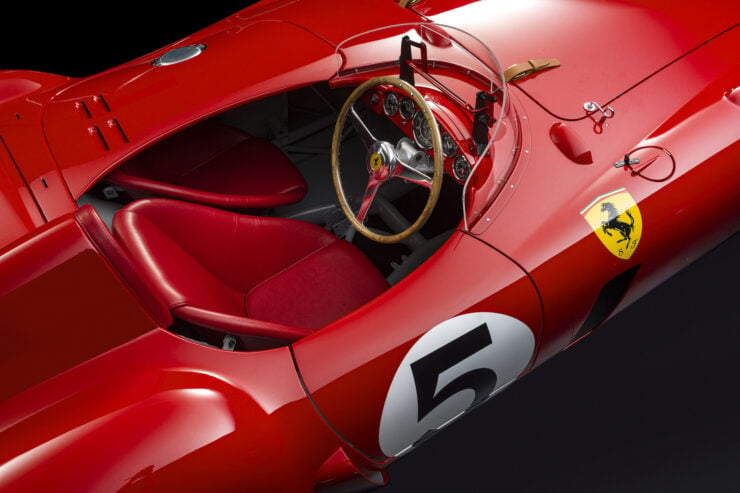

Lampredi had earlier developed a V12 for Ferrari as well as a smaller inline-four. He would essentially base much of hid design for the straight-six off the earlier inline-four – it was a time saving measure however it also meant he had an advanced starting point that had been tested in the rigors of competition.
The 2.0 liter Lampredi four had an individual cylinder capacity of approximately 500cc, therefore adding two additional cylinders would bring the displacement up to 3.0 liters. This new engine was called the Tipo 114, though many still refer to it simply as the Lampredi Six.
Further developments of this engine would come thick and fast, the Tipo 118 would arrive soon after with a larger 3.7 liter displacement. This was then succeeded by the Tipo 121 with a displacement of 4.4 liters and 330 bhp at 5,800 rpm – it would be this variant that powered the Ferrari 121 LM.
Three factory team works racing examples of the Ferrari 121 LM were built, for the 1955 24 Hours of Le Mans, they would later be followed by a fourth example. Impressively, all four of these cars still exist and are accounted for today almost 70 years later.
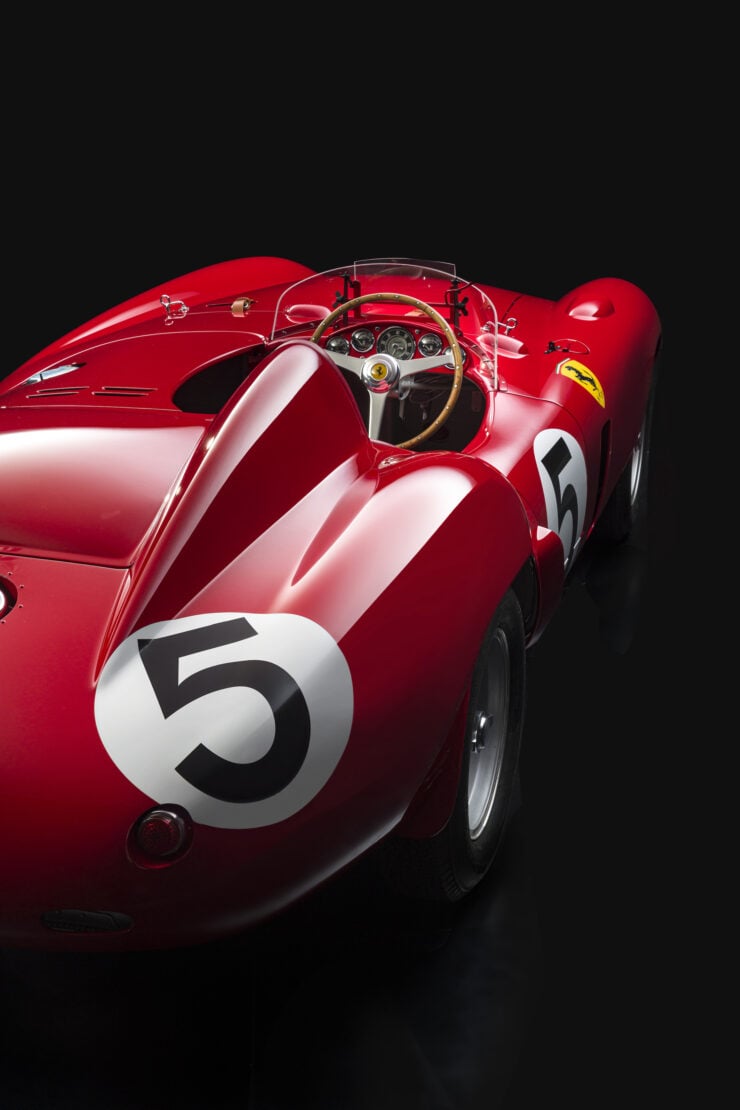

Unfortunately for Ferrari the still-new Tipo 121 straight-six would suffer from some teething issues that prevented victory at Le Mans. The car did still manage to set the fastest lap, whipping through the Mulsanne Straight speed trap at an astonishing 181 mph (291 km/h).
One of the cars would suffer an engine failure after 52 laps, the second dropped out with the combined trouble of clutch issues and an overheating engine after 76 laps. This left one car in contention, however it suffered a clutch failure after 107 laps and 10 hours of racing completed.
The Jaguar D-Type of Mike Hawthorn and Ivor Bueb would win the race, followed across the line by the Aston Martin DB3S of Peter Collins and Paul Frère, with third place position going to another Jaguar D-Type – this one piloted by Jacques Swaters and Johnny Claes.
The Mercedes team had withdrawn from the race after the Mercedes-Benz 300 SLR driven by Pierre Levegh had been involved in an accident with the Austin-Healey of Lance Macklin. Levegh’s Mercedes had been launched off the track and into the grandstand at great speed, the tumbling car killed 83 people including Levegh, and seriously injured almost 180 additional spectators.
This tragedy became known as the 1955 Le Mans Disaster.
https://youtu.be/6v3dcsYNhso
Above Video: This is a full length documentary about the accident that would become known as the 1955 Le Mans Disaster. It’s still the most deadly crash in motor racing history.
The 1955 Ferrari 121 LM Shown Here
The car you see here is one of the four original 1955 Ferrari 121 LMs built – it was one of the Scuderia Ferrari Works cars and it was driven at both the 1955 24 Hours of Le Mans and 1955 Mille Miglia.
This car was first raced by Ferrari Works driver Piero Taruffi, a man who had been described by British driver Denis Jenkinson as “the most dangerous rival of them all, that master tactician, Taruffi” in a period interview with Motor Sport.
While racing in the 1955 Mille Miglia across Italy this car had set a blistering pace, besting the 300 SLR for much of it, until an oil pump failure ended his race after the halfway point. At Le Mans later that year this car would be driven by Maurice Trintignant and Harry Schell.
The other two Ferrari 121 Las had dropped out of the race due to the above noted mechanical failures leaving just this car out on track to fight with the Mercedes and Jaguars. French driver Trintignant battled with Mike Hawthorn in his Jaguar, the eventual race winner, until his race was cut short in the 10th hour by mechanical gremlins.
The car later made its way to the United States where it was raced extensively. More recently it has been through a nut-and-bolt restoration to 1955 Le Mans specification carried out by Ferrari Classiche from 2018 to 2023.
It’s now being offered for sale by RM Sotheby’s, fittingly at Le Mans, with a price guide of $6,000,000 – $7,000,000 USD. If you’d like to read more about it or register to bid you can visit the listing here.
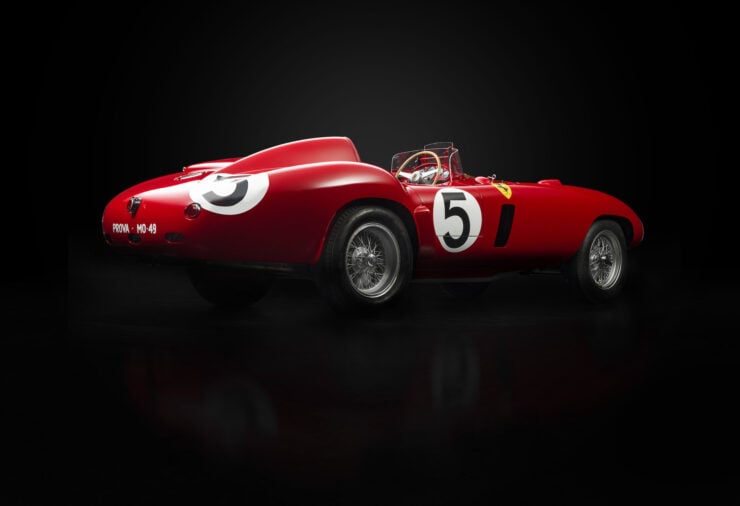
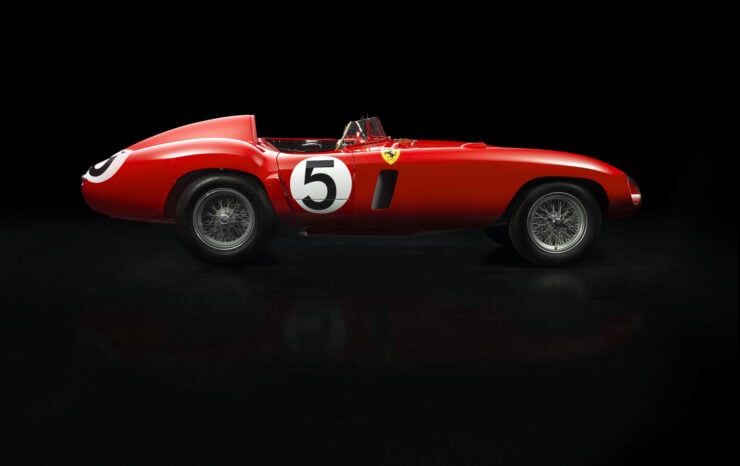
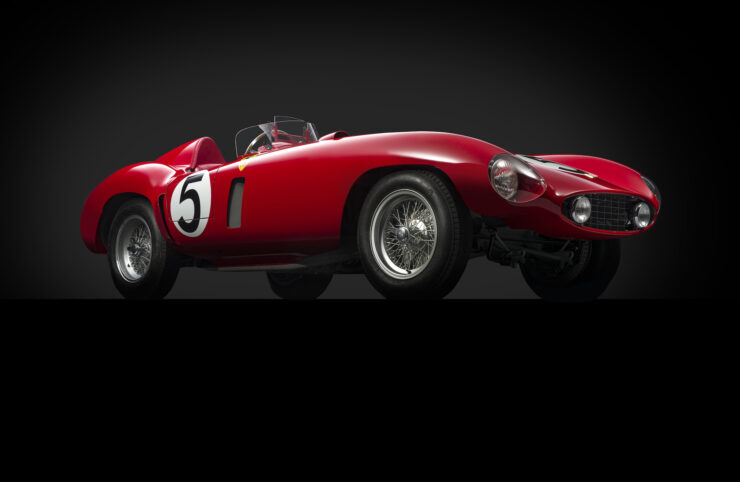
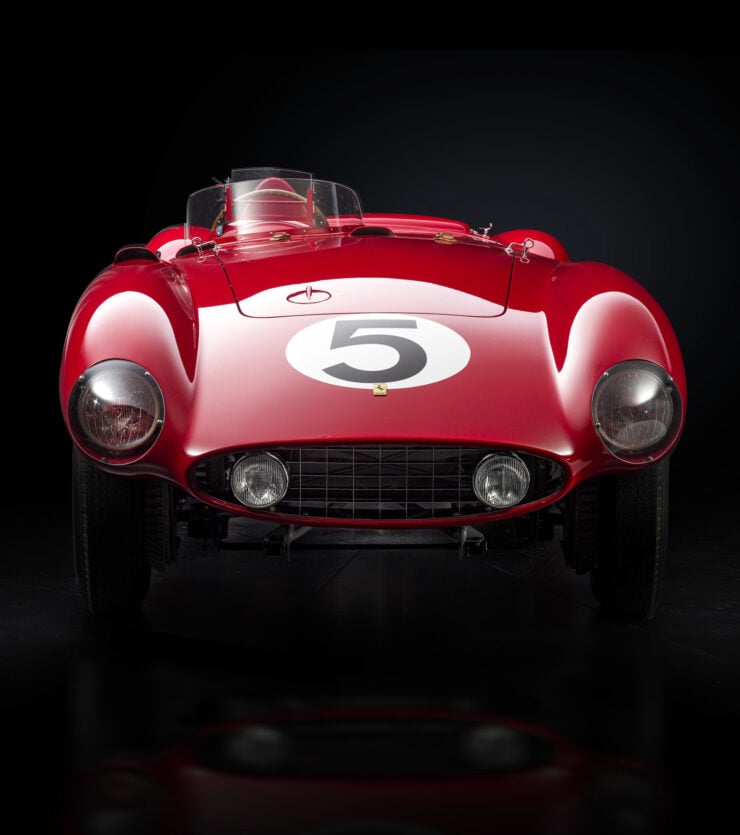
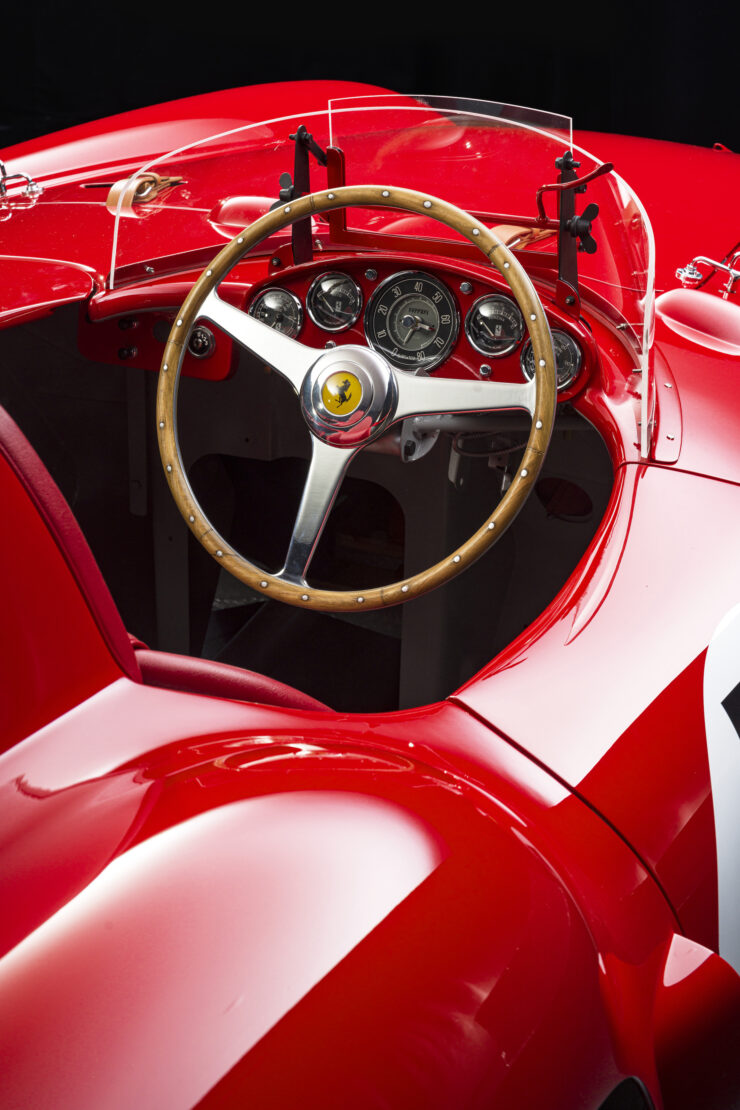
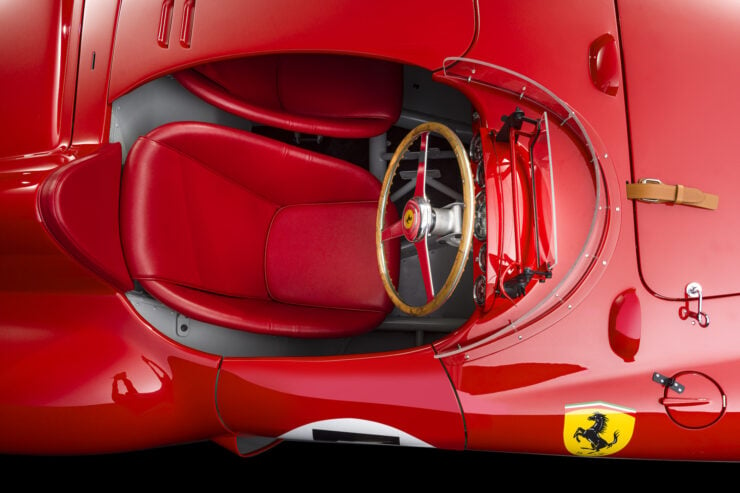

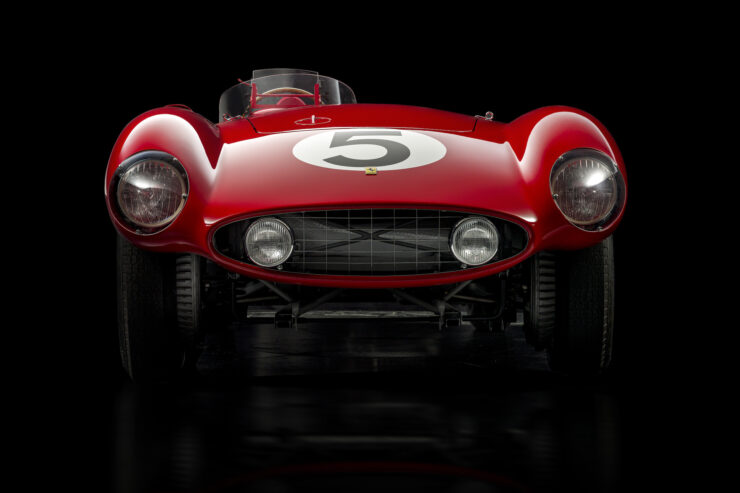

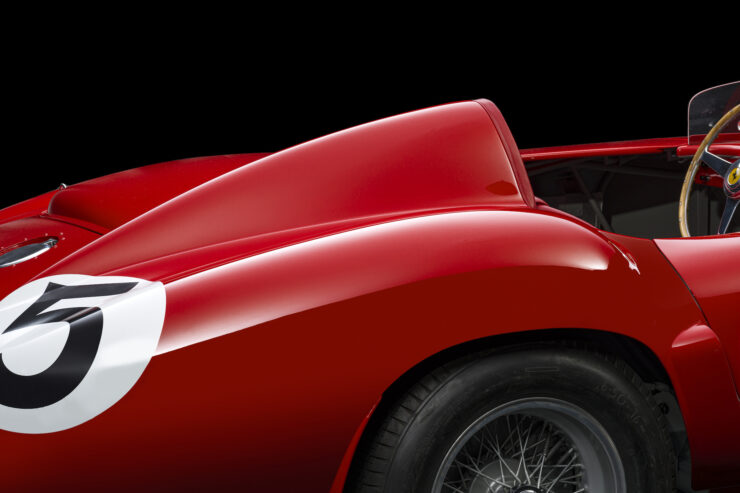
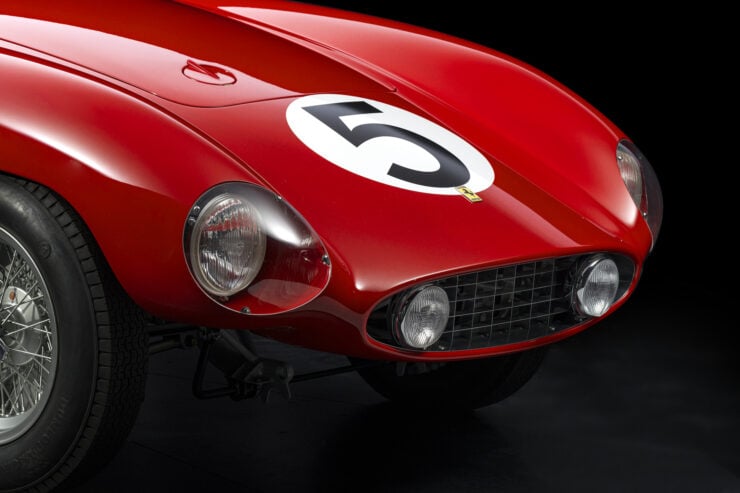
Images: ©2022 Courtesy of RM Sotheby’s

